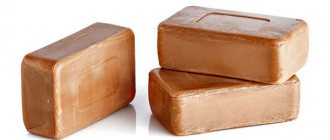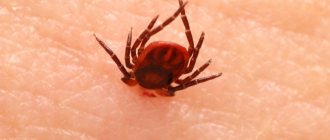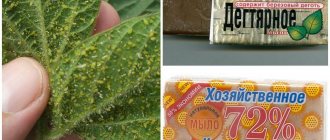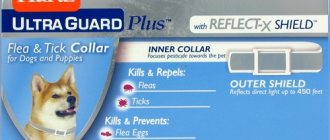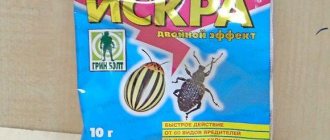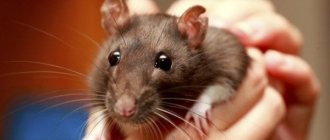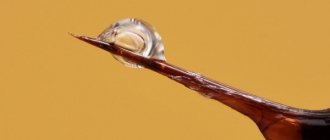Classification of poisons for deratization
Rodent control is a common necessity when running a farm.
Using rat poison, you can quickly get rid of dangerous pests that spread infections and spoil supplies and food. Chemical compounds known as “rodenticides” are produced on the basis of highly toxic substances and are included in the list of drugs that require careful handling. Rat poison is classified according to the degree of danger and toxicity:
- Compositions based on zoocoumarin. Their action leads to blood clotting disorders and blocks the functioning of the diuretic system. Pests die from internal bleeding.
- Rats from zinc phosphoride with the addition of naphthylthiourea. These are the most effective drugs that can kill rats within 4-8 hours after consuming the mixture. Disinfection specialists recommend using them limitedly, only in the presence of a professional exterminator.
- Highly toxic compounds. They may contain strychnine, arsenic, and various types of phosphorus, which lead to damage to the internal organs of the animal. Due to the high degree of danger, they are not recommended for home use.
The most common accumulative anticoagulants for use. Such mouse poison, after eating, remains in the liver and kidneys, disrupting the reproduction process of rodents. On sale you can find many options for poisonous drugs, which should be selected carefully: Flocumafen, Warfarin, Ethylphenacin, Brodifacoum. They may contain organic and chemical components, acids, and salt compounds included in cadaveric poison.
Most often, rat poison looks like a fine, light-colored powder with a faint odor. This allows you to add it to porridges or purees made from ordinary products. Sometimes small granules, tablets or sachets of ready-to-use mass are offered. The compounds dissolve well in food, which attracts hungry rodents. It is recommended to additionally stir some products in water, leaving the bowl in the path of rodent migration.
This method of preparing poison has a downside. The pleasant smell attracts pets. If you do not hide the fragrant bait with toxins, the dog may be poisoned with rat poison, which brings quick death. Therefore, it is necessary to think about the location of traps, study how the active component works in order to provide assistance in a timely manner.
An effective means of baiting rats over a large area
The main means of fighting over large areas are:
- bait houses. Food containing poison is placed in them. They place houses in places where there are large concentrations of rodents. When a rodent comes inside, the house closes;
- treatment of burrows with rodenticides (poisons in powder form). Particles of the product fall on the fur, and then when licked inside the animal;
- filling holes Rats can chew through most materials, even concrete. Therefore, it is better to cover the holes with metal sheets or a wall made of cement, shells and crushed glass;
- traps and traps. Most often they have a wooden base. It is difficult to catch a rodent with such devices; they can only be used in secluded places once, since rats leave their odors, warning their relatives of danger;
- carbonation. A poisonous gas based on hydrogen phosphide or carbon monoxide is sprayed into a closed room. This mixture does not harm food products and disappears quickly, leaving no odor.
Small size is deceptive as the rat can be fast and agile
How does poisoning occur?
Zookoumarins are anticoagulants, that is, substances that prevent blood clotting. Anticoagulants disrupt the metabolism of vitamin K in the liver. Vitamin K plays an important role in the synthesis of coagulation factors VII, IX, X and prothrombin, the insufficient content or absence of which does not allow the formation of a blood clot (thrombus). All this leads to the development of hemorrhagic syndrome (massive bleeding).
Anticoagulants from rat poison are quickly and almost completely absorbed when taken orally, their maximum concentration in plasma is observed after 3 hours.
Accidental poisoning of people with rat poison is rare, since for the development of intoxication a person must ingest a sufficiently large dose of poison orally. Typically, such poisonings occur as a result of suicide attempts or in children.
Causes of intoxication
Several years ago, the most popular drugs were those containing high levels of arsenic and strychnine. When deposited on the skin or mucous membranes, they provoked unpleasant consequences. For home use, manufacturers produce rat poison in granules, which prevents accidental inhalation of the powder. The latest generation of rodenticides have a standardized dosage, calculated for the weight of the rodent and does not threaten the health of the user.
Human poisoning by rat poison can occur in several situations:
- intentional use of a dangerous substance for the purpose of committing suicide or crime;
- children's attempts to taste bright granules;
- storing mouse poison with food;
- violation of safety rules when treating premises from rats;
- absorption of toxic substances through the skin during prolonged work with them during the manufacture of bait.
The safest household products are those with a cumulative effect, which are neutralized in minimal quantities. But with chronic hepatitis and weak immunity, the cleansing process may not be effective enough, and severe poisoning occurs.
Clinical signs of rat poison poisoning:
- bleeding from the nose and gums becomes more frequent without visible damage;
- blood is excreted in urine and feces;
- drowsiness;
- muscle weakness;
- cyanosis of the skin;
- complaints of dizziness, nausea;
- pain in the stomach, right hypochondrium.
If the poison for rats included arsenic, the victim will experience heart rhythm disturbances and severe arrhythmia. He often loses consciousness, feels headaches, and the nasolabial triangle stands out on his face. In people with chronic diseases of internal organs, stomach or intestinal ulcers, dysbacteriosis, and dysfunction of the kidneys and hepatic ducts are exacerbated.
Rules for preparing poison with your own hands
Folk remedies for rats are significantly inferior to industrial ones, so they are often used as additional ones. There are several ways to prepare poison at home:
- gypsum in milk. You need to mix them so that the consistency remains liquid. In the rat's intestines, the gypsum thickens and interferes with natural nutritional processes, which is why the rodent dies. You need to be prepared for the fact that animals are able to recognize this threat, so the remedy may be ineffective,
- quicklime with sugar. In the rat's stomach, the lime heats up and corrodes its walls. The method is not the most effective, but accessible. There is no confirmation of information about the effectiveness of this method, but minimal harm will definitely be caused to rats,
- cork shavings. It can be mixed with any porridge or animal food. May cause gastric obstruction,
- crushed glass. It needs to be added to the bait, preferably liquid. Glass will cause severe harm to the digestive and circulatory system,
- chilibukha tincture. It is added to liquid bait. The tincture is poisonous due to the strychnine content, but rodents easily detect this remedy due to its strong odor, similar to garlic.
Symptoms of poisoning
When the drug enters the body, signs of poisoning will certainly appear. But they manifest themselves differently for everyone. For some, after 2-3 hours, for others, after 1-2 days.
The main symptoms of rat poison poisoning:
- weakness;
- aches throughout the body;
- nausea;
- lack of appetite;
- dyspnea;
- pallor of the skin of the face and chest;
- periodic nosebleeds;
- increased bleeding of gums;
- the appearance of blood in the urine;
- severe pain in the abdominal area;
- formation of hematomas along the entire perimeter of the body;
- hair loss.
We suggest you familiarize yourself with: Anti-flea shampoo for cats
Signs of rat poison poisoning:
- intense headache;
- pallor of the mucous membranes and skin;
- nose bleed;
- bleeding from the gums;
- the appearance of blood in the urine (hematuria);
- gastrointestinal bleeding, which is manifested by vomiting “coffee grounds”, black tarry stools (with severe bleeding, there may be an admixture of fresh blood in the stool and vomit);
- tachycardia;
- decreased blood pressure;
- dizziness;
- severe weakness;
- apathy;
- lack of appetite.
The more severe the poisoning, the more pronounced its symptoms will be.
Symptoms of poisoning by rat poison (ICD 10 - X48) appear 2-4 days after it enters the body. Intoxication has a chronic course. When taking a large dose of the substance, acute intoxication is possible - in the first day.
In case of oral poisoning with mouse poison, the following symptoms most often appear:
- a significant decrease in performance, lethargy, drowsiness and unreasonable fatigue;
- loss of appetite and nausea;
- nosebleeds;
- unbearable headaches;
- pale skin;
- dilated pupils;
- bleeding of mucous membranes;
- bloody spots in the stool;
- dysfunction of the organs of hearing and vision.
The intensity of symptoms and their number depend on various factors and body weight. A child will feel unwell much faster than an adult. If you suspect poisoning from a rodent poison, you should immediately consult a doctor to receive qualified treatment. Self-therapy is unacceptable. The consequences of amateurish actions can be irreparable.
Effect of the drug
Before you start exterminating rats in your home, you need to become familiar with exactly how the poison works. The poison is divided into several groups.
The first type has a chronic course. In this case, a rodent under the influence of poison can live up to 2 weeks. It all depends on the concentration of the substance in his body. Anticoagulants are often included in this group. As a result, the animals suffer for two weeks, and then die from profuse internal bleeding. It should be noted that poisoning from such rat poison occurs most often in dogs and cats.
There are also products that have an immediate effect. Accordingly, the rodent, as soon as it begins to consume poison, dies. This is due to the fact that the substance enters the stomach. This group should include drugs that have a mummifying effect. These products contain special substances. They allow the smell of rotting and decomposition to be suppressed after the death of a rodent. The body will simply dry out gradually.
Each of the poisons described above has its own special actions. Some substances affect the functioning of the digestive system, others simply block breathing, and still others affect the nerves, which affects the life of the rodent.
Lethal dose of rat poison
Whether it is possible to be poisoned by rat poison depends on many factors: dosage, presence of diseases of internal organs, type of substance. The most toxic compounds are made independently, without compliance with standards and precautions, from chemicals purchased second-hand. When phosphates or acids are added to the drug, the level of toxicity increases several times.
The lethal dose of rat poison for humans is 4 grams. toxic compound in its pure form without additives or flavorings. In terms of finished poison, this is at least 130–150 grams. in granules, which are supplemented with bone and wheat flour and bran for flavor. To get acute poisoning, you need to eat 60–70 mg/kg of Warfarin or 300 mg/kg of Bromadiolone in a single dose. For a child or an elderly person with poor health, the dose is significantly reduced.
First aid for rat poisoning
You can reduce the risk of painful consequences if first aid for rat poisoning is provided correctly. At the initial appearance of signs of intoxication, it is necessary to rinse the stomach to remove all remaining granules and reduce the impact on the digestive system. The solution is prepared from warm water with the addition of a spoonful of salt and several crystals of potassium permanganate. Repeat washing until completely clean.
If a child has eaten rat poison, the stomach is washed with warm water without additives and a cleansing enema is given. The baby should definitely be given adsorbent based on body weight and age:
- Activated carbon;
- Polyphepan;
- Sorbex.
When poisoned by rat poison, signs of damage may appear 12-72 hours after the toxin enters the body. It all depends on the concentration of harmful substances and the state of human health. The main symptoms of poisoning are:
- loss of appetite;
- nausea;
- abdominal pain;
- vomit;
- diarrhea;
- weakness in the body;
- pale skin;
- headache.
In very severe cases of poisoning with anticoagulants, bleeding from the nose, gums, the appearance of bloody traces in the stool, and red spots on the skin and mucous membranes may occur.
If a toxic substance has been accidentally swallowed, it is necessary to immediately take first aid measures:
- induce a gag reflex by inserting 2 fingers deep into the mouth and pressing on the root of the tongue;
- drink at least 3 liters of clean water;
- take a saline laxative;
- drink 4 tablets of activated carbon.
If the poison gets on the skin, the affected area should be thoroughly washed with warm water and soap. The mucous membrane is washed with plenty of water. If the poisoning is severe, you should urgently seek medical help. To treat poisoning with anticoagulants, vitamin K1 is used, which neutralizes the effect of the toxin. In very severe poisoning, a blood transfusion is given.
If an adult or child has swallowed rat poison, it is necessary to urgently call an ambulance and immediately take measures to eliminate the toxin from the organ.
You can do a gastric lavage and force the patient to drink at least 3 liters of boiled water. Most often, after this a person develops a gag reflex, give the victim a sorbent, for example, activated carbon, and a laxative.
The first thing to do is call an ambulance, and only then should you begin providing first aid.
In case of poisoning, it is necessary to perform gastric lavage as soon as possible. This procedure allows you to remove part of the toxic substance from the body to prevent its further absorption and thereby reduce the severity of hemorrhagic syndrome. To lavage the stomach, the victim is given 0.5–1.5 liters of warm water to drink, after which, irritating the root of the tongue, they induce vomiting. The stomach should be rinsed at least 2-3 times until the rinsing water becomes clean, free of food particles.
To inactivate the poison that has managed to penetrate the small intestine, you should take any drug with absorbent action, for example Activated carbon. The dosage depends on the person’s body weight and is 1 tablet. for every 10 kg. Before use, activated carbon should be crushed into powder and mixed with half a glass of water.
We suggest you familiarize yourself with: Bodfly larvae under the skin in the human body
A variety of poisons and their effect on pests
For use at home, you must purchase a ready-made drug. It can be in the form of seeds, powder or grains.
Rat poison can be purchased from a veterinary pharmacy. It is already coated with a low-toxic drug and the possibility of poisoning is reduced.
It is not recommended to prepare poison for rats on your own, even if there are people who have already made it and successfully used it themselves.
You can become poisoned by rat poison during cooking by inhaling, or it can enter the body through damaged skin, or it can enter the intestines through dirty, poorly washed hands. In such cases, internal bleeding is possible, which is life-threatening.
Coumarin is a component of rat poison that acts by disrupting the process that controls blood clotting.
In just a few hours, a deficiency of vitamin K forms in the body, the walls of blood vessels begin to collapse, which provokes a failure in the normal functioning of the liver. The blood changes its composition, a serious form of anemia occurs, then oxygen starvation of the brain.
If you do not seek medical help in time, then in just 1-2 days the body suffers a serious malfunction: the normal functioning of the liver, kidneys, and lungs is disrupted, and degeneration of internal tissues occurs.
Chemical compositions for deratization are classified as pesticides. They are used on an industrial and domestic scale to control rodents. There are several chemical compounds on sale that have similar effects on the mouse, rat and human body:
- “Strychnine” and “White phosphorus” are highly toxic poisons. Extremely dangerous to human health.
- “Zinc phosphite” and “Krysid” are highly toxic and belong to the category of fast-acting poisons. Rodents die in 100% of cases. The instructions for their use say that use is permissible in exceptional cases, if other means are powerless. The poison poses a great danger to humans.
- Preparations based on “Zookoumarin”. A common drug that is freely available.
The lethal dose of rat poison for humans depends on the main active ingredient. When taking drugs based on Warfarin (a strong anticoagulant), 4.8 grams is enough for death.
When using the latest generation of drugs, symptoms of rat poison poisoning begin to appear only after 2–4 days. After interacting with enzymes and digestive juice, toxins reduce the production of vitamin K, which is responsible for blood clotting, its composition and consistency. The patient's enzyme production is disrupted, hemoglobin and important indicators for the body decrease.
It is more difficult to predict the body's reaction when consuming rat poison made with the addition of phosphorus, nitric acid or strychnine. It affects internal organs, accumulates in the liver and kidneys, and can penetrate the brain. Many toxins negatively affect the functionality of nerve endings and provoke their death.
Poisons against rats can be addictive to rats. If an animal swallows a poisoned bait with a small concentration of poison and does not die, then over time it will develop an aversion to this substance, and the drug will be powerless in the fight against rodents. Therefore, poisons for deratization are constantly being improved.
The most ineffective poisons are those containing thallium, lead and arsenic. Such poisonous components are obsolete and are not particularly popular. Toxic substances act slowly. Poisoned animals may writhe in death throes for 2 days.
To enhance the toxic effect of arsenic-based drugs, manufacturers add other toxic components: white and yellow phosphorus, thallium sulfate, strychnine. The combination of such substances kills not only rats and mice, but can kill pets and cause irreparable harm to human health.
The most modern and advanced poisons against rats are zoocoumarins. They contain anticoagulants that block the animal's blood from clotting. Once the pest enters the body, zoocoumarin causes internal bleeding and death. Through natural openings in the rat’s body, poisoned blood flows out and poisons its relatives.
Anticoagulants for rats come in first and second generation. First generation drugs are less toxic and can be completely excreted by animals through the kidneys within 3 days. Such components act very slowly. Over time, rodents become accustomed to them and they lose their effectiveness.
Drugs included in the composition
The composition affects the speed of their action. Products developed for rodent pestilence are organic and inorganic.
The first ones are quite effective, with a mild effect. In small doses they are harmless to people and pets.
These include:
- Anticoagulants block blood clotting in pests, act quickly, and do not harm the environment. The active ingredients in such drugs are bromadiolone, coumarin, warfarin, brodifacoum.
- Ratsids help poison rats by stopping their breathing. They are used rarely - once every couple of months due to the development of immunity to it in rodents. The main component of these drugs is naphthylthiocarbamide.
Inorganic poisons are used less frequently because they are very toxic and can cause serious harm to others. They contain heavy compounds - lead and aluminum salts, thallium and other metals. The use of such means is a last resort: they are used when rats are adapting to organic poison or in situations where there are really a lot of pests. Rat poisons containing phosphite are especially dangerous.
For poisoning of rodents in rooms with a small area, preparations with the addition of denatonium are used together with flavorings and food additives. In large areas, products based on bromadiolone are used - a gel-like poison approved for use in schools, kindergartens, hospitals and residential buildings. You can also poison pests using products containing brodifacoum.
When is medical help needed?
Without timely medical care, one cannot count on a successful outcome, so it is necessary in any case, even if the poisoning seems not serious.
Treatment of patients with intoxication caused by rat poison is carried out in the toxicology department of the hospital, and in critical condition - in the intensive care unit.
Specific antidotes for anticoagulants contained in rat poison are synthetic analogues of vitamin K (Vikasol, Phytomenadione). They should be administered for a long time, at least 10-15 days. In case of severe poisoning, blood transfusion and/or plasma transfusion is indicated to combat bleeding.
Symptomatic therapy is also carried out, aimed at reducing the severity of signs of poisoning and maintaining the function of the affected organs.
Possible consequences
Doctors do not recommend ignoring rat poisoning; be sure to consult a toxicologist for advice. Many effects appear after a few days or weeks. The most serious for humans is considered to be hemophilic syndrome, which disrupts blood clotting. It provokes severe bleeding with a simple scratch and jeopardizes surgical intervention. Kidney damage, necrosis of certain areas of the liver, and nervous diseases are often encountered.
We suggest you read: The best option for killing parasites is shampoo for lice and nits
If you use the substance incorrectly or use it without observing the proportions, then poison from rats can easily cause considerable harm not only to them.
When using potent poisons and violating safety precautions, an adult can be poisoned. Poisonous drugs can be purchased in specialized stores and you can carry out deratization yourself. But it is better to seek help from specialists who know the rules for using the products and can guarantee the quality of the work performed.
Rat poisons have a small concentration of toxic substances. To receive a lethal dose of poison, an animal must feed on poisoned bait for about a week. And to kill a person, the pieces of poison must be of impressive size. But some toxins can enter the body through the respiratory tract or be absorbed through the skin.
Any poisoning does not go away without a trace, including intoxication with rodent poison. A person who does not receive help on time will face:
- Bleeding gums.
- Poor blood clotting.
- Internal hemorrhages.
To avoid poisoning, you need to use anti-rodent products that do not have such a detrimental effect on humans. You can get recommendations from the sanitary and epidemiological station. The ideal option would be to involve specially trained people from the sanitary and epidemiological station to solve problems with rodents.
The article has been approved
by the editors
The prognosis for poisoning with rat poison is always serious. In case of severe intoxication, death cannot be ruled out.
Bleeding in the urinary system can cause the development of a life-threatening complication - acute renal failure.
Rules for treating premises from rats
Rats are smart and organized animals, and they may not react to bait and traps that are simply scattered around. These rodents live in groups. They send the weakest rat on reconnaissance. She checks baits, inspects the suitability of new territories, etc. Therefore, slow-acting poisons are the most effective. After 5–7 days, the rodents die without having time to “inform” their relatives about the danger.
It is necessary to decide which area is inhabited by rats and what they eat. When preparing poison, their diet must be taken into account.
First, you need to feed the rats regular food, and then gradually add poison. You need to be very careful if there are small children or pets in the room, as they may accidentally become poisoned. Place the poison in areas where rodents are active. You can find out about these places as follows. Sprinkle a little flour where they are likely to appear, and check the next morning to see if marks have been left. After this, you can already think through the tactics of placing the poison. For greater effectiveness, combine industrial remedies with folk ones. If poisonous baits remain untouched for several days, then the rats have sensed danger and will not consume your poison.
It is necessary to regularly treat the room from bacteria and traces of rodent activity, since they are carriers of diseases. Basic methods of disinfection:
- surface treatment with antimicrobial agents,
- removal of garbage, food products with which rodents have been in contact,
- heat treatment of textiles,
- use of antiseptics,
- maintaining personal hygiene.
It is also necessary to get rid of the dead rats. Do not touch them with your hands under any circumstances.
Video: how to properly treat rats
Prevention
To prevent poisoning from rat poison, deratization and baiting of rodents should be entrusted to professionals. If it is necessary to prepare the poison yourself, work is carried out wearing protective gloves, precautions are strictly observed, and disposable utensils are used. For the greatest safety, it is better to use special traps, traps, and treat the home in the absence of children and pets.
To prevent poisoning from rat poison, you should carefully follow the instructions for its use, and also observe safety precautions not only during work, but also during storage of the toxic substance.
Rat poison should be stored out of the reach of children, preferably in a locked cabinet. When working with it, you should use personal protective equipment (respirator, change of clothes, rubber gloves).
The best and safest option for rodent control is not to use rat poison yourself, but to call a pest control specialist.
